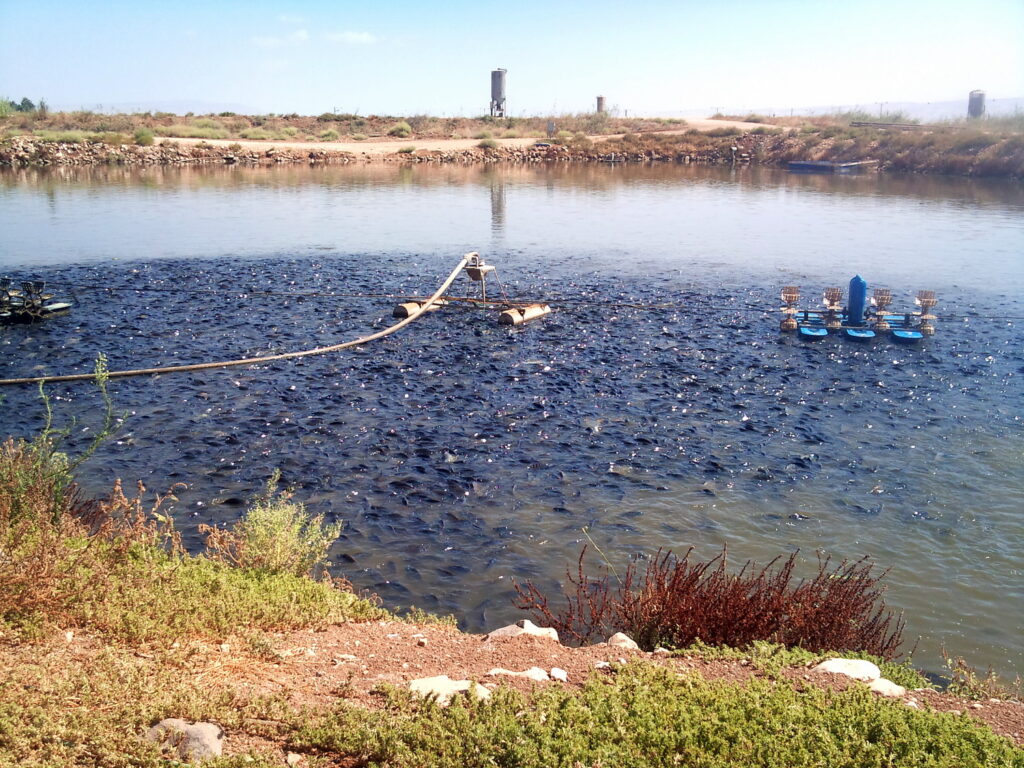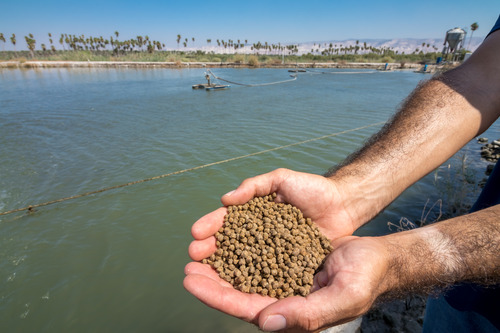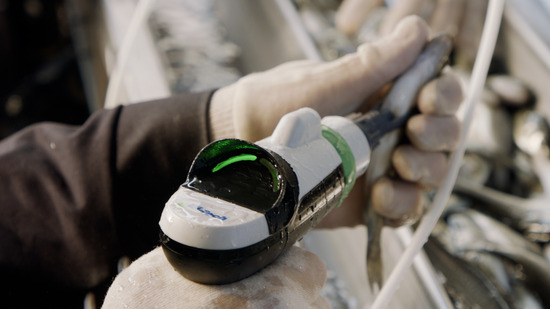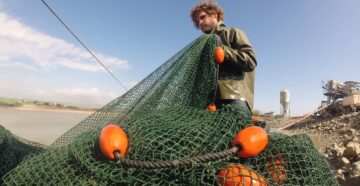Let’s Dive In: Part 3 – Are Fish Raised on Farms Healthy?
As a veterinarian, I’ve spent my career working with pigs, cattle, chickens and the like. Throw a question at me about those species and I’ll likely have an answer. But when it comes to aquaculture? Well, let’s just say I’m a fish out of water.
That’s why I’m glad Natan Wajsbrot is on the Phibro Animal Health team. Based in Israel, Natan has more than 25 years of experience in ornamental and edible freshwater and marine fish. He earned a bachelor’s degree in environmental biology and a master’s degree in life sciences, and currently is a fish health expert in the Northern region of Israel and Latin America for Phibro Aqua.
In Part 3 of “Let’s Dive In,” my four-part series on aquaculture, I share what I learned from Natan about the steps farmers take to keep their fish healthy.
Are Fish Raised on Farms Healthy?
To cut to the chase – yes.
Farmed fish come from a variety of farm types around the world. Depending on the species and stage of life, fish like salmon and trout can be raised in large net enclosures in oceans, rivers and ponds, usually in cooler climates. Freshwater fish like tilapia generally are raised in lakes, rivers and ponds in warmer climates. There are also land-based fish farms producing a wide variety of species like salmon and tilapia in indoor or outdoor tanks.
A majority of the fish we buy at the store or order at our favorite restaurants are raised on farms. In fact, more than half of the seafood eaten around the world is farmed, and about 80% of the world’s salmon harvest comes from fish farming.
Thank goodness.
Aquaculture is the world’s fastest growing food-producing sector because of increasing demand for fish. Given the growing demand, overfishing is a real concern. Fish farming not only helps provide important protein and nutrition, particularly for developing countries, but allows natural fish stocks to flourish.
[Learn more about demand and fish farming in Let’s Dive In: Part 1 – Why are Fish Farmed? | Explore Animal Health ]
Regardless of the type of fish farm, health and welfare are a priority.
Tailored Diets
At each stage of life, from fry (newly hatched), through fingerling (young stock) to full-grown (adult), fish are provided with highly tailored, scientifically formulated and balanced diets to ensure optimal health. Diets are designed according to species and aim to mimic the fish’s natural diet, with some being vegetarian and some carnivorous.
Salmon, for example, are fed dry pellets that contain around 70% vegetable ingredients and 30% marine raw materials like fish meal and fish oil. Salmon feed typically contains up to 45% protein, depending on the life stage of the fish, and the 40 or so essential micro-nutrients that animals need to be healthy and grow – the same reason that fish is so good for us, too.
The salmon fish farming industry is moving to more innovative and sustainable feeds that can be plant-based or insect-based, therefore reducing the need for fish meal and fish oil as a source of protein while still maintaining the high nutritional value. Traceability of the feed ingredients is highly adopted in the fish farming industry and there are various certification programs that monitor and validate the process.
On the other hand, tilapia feeds are typically vegetable-based containing approximately 25% to 30% protein, depending on the life stage of the fish. Interestingly, some feeds are designed to float and others designed to sink – depending on the species’ natural feeding habits.

This photo depicts carp in an earth pond being fed with fish pellets through an automatic feeder that is programmed to give pulses of food according to the needs of the fish in the pond. On the right side (blue) is an aeration paddle wheel that works automatically when additional oxygen is needed.
Meticulous Care
Keeping fish in enclosures also provides the luxury of careful monitoring by caretakers. It’s much easier to determine the health of the fish in an enclosed facility where behaviors can be observed 24/7. One significant benefit of farming fish in tanks on land is the ability to carefully control the environment, for example, water quality and temperature.
Medications are used when needed as a tool to keep fish healthy.
For example, while many of us rely on vaccines to ward off or minimize the impact of illnesses like the flu, shingles and chicken pox, fish are given vaccines, too, at certain stages of growth. Like most living creatures, they are not immune from sickness.
Antibiotics are given when needed – used responsibly and judiciously – to treat or control diseases. Fish are also given nutritional feed additives at times, which can be all-natural products that can help alleviate stress and improve gut health and immunity, for example.
Third-Party Verification
Like other types of farming, fish farming is highly regulated. Depending on the region, and more so for developed industries, every aspect of the farming value chain is held to rigorous industry standards and is carefully regulated to ensure a high level of welfare, consumer safety, community consideration and environmental stewardship.
In the U.S., livestock farmers can join voluntary certification programs to verify and demonstrate the highest industry standards when it comes to topics like animal care, food safety, worker safety, community and environmental stewardship. For example, dairy farmers can participate in the National Dairy FARM Program. Pig farmers have PQA Plus and beef producers can take part in the Beef Quality Assurance program.
Similarly, fish farming has certification programs, including the Global Seafood Alliance, the Marine Stewardship Council and the Aquaculture Stewardship Council.
As a veterinarian who also raises livestock, I’m committed to providing quality of life for the animals in my care. As you can “sea,” fish farming is no different.
Fish farmers are driven by a passion to provide an important and enjoyable source of protein for consumers and take pride in ensuring they get a safe, healthy product by providing the highest standards of care. It’s the right thing to do.
I encourage you to read the previous pieces in the series and stay “tuna’d” for “Let’s Dive In” Part 4, “Is Fish Farming Sustainable?” – where you’ll learn about sustainable innovation in aquaculture and how it’s helping address hunger and food insecurity and boost economic opportunity around the world.
Let’s Dive In: Part 1 – Why are Fish Farmed? | Explore Animal Health
Let’s Dive In: Part 2 – How Are Fish Farmed? | Explore Animal Health
Let’s Dive In: Part 4 – Is Fish Farming Sustainable? | Explore Animal Health
Resources
https://www.globalseafood.org/
https://globalsalmoninitiative.org/en/
https://www.globalgap.org/what-we-offer/solutions/ifa-aquaculture/




